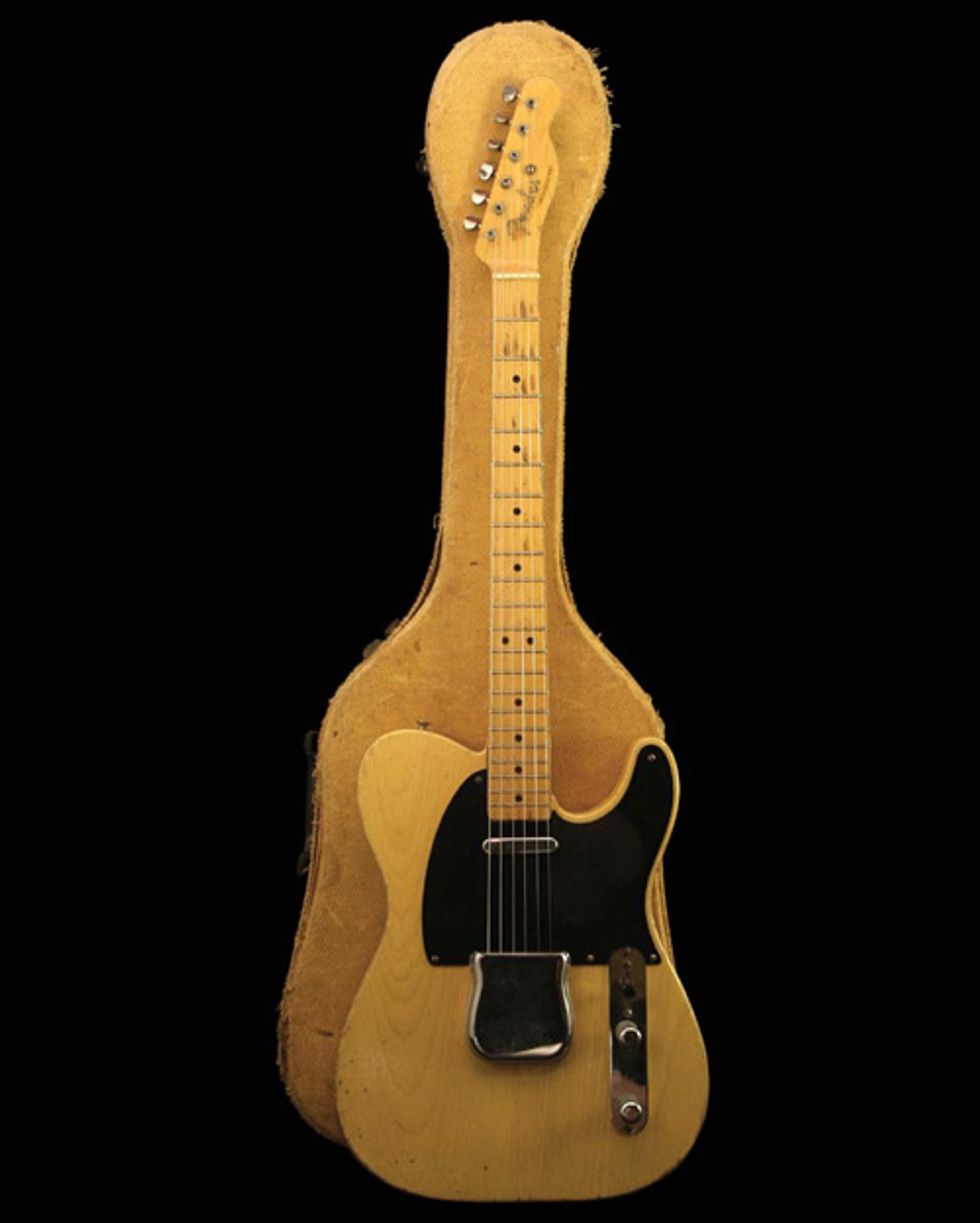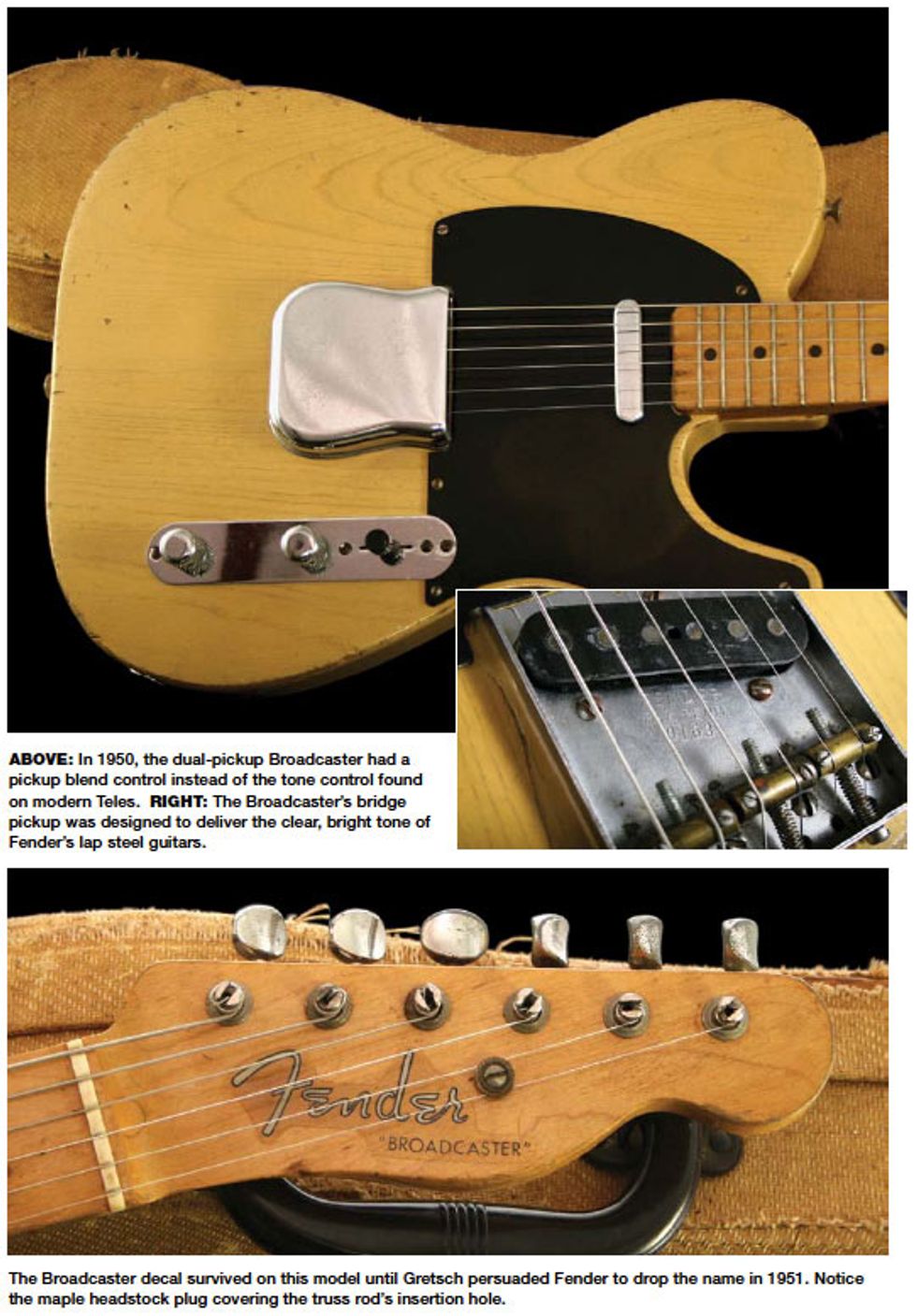
This 1950 Fender Broadcaster—serial #0163—is instantly recognizable as the forebear of today’s Telecaster.
In the late 1940s, Leo Fender began working on a practical electric Spanish guitar. His design would be simple, and the guitar would be easy to manufacture and repair. It would also be convenient and uncomplicated for the working musician to transport and maintain. Introduced in the fall of 1950, the result was the Broadcaster.
The Broadcaster was a two-pickup solidbody guitar able to reach high stage volumes with none of the feedback problems that plagued hollowbody guitars. The instrument was fitted with an easily replaced bolt-on neck that contained an adjustable truss rod (something earlier prototypes lacked). The instrument’s pickups were meant to give the same bright clarity as Fender’s lap steel guitars. Lastly, a 3-saddle adjustable bridge was included for better (though not perfect) intonation.
In mid-February of 1951, the Gretsch Company contacted Fender to point out that the guitar’s name was very similar to its Broadkaster drum set. Gretsch requested “immediate assurance” that Fender would abandon the name. Fender complied, and the guitar continued to be produced without a name until September of that year, when “Telecaster” began appearing on the decal. The Telecaster name continues to be used on the Broadcaster’s contemporary descendents.
Most modern Telecasters have changed very little from the 61-year-old Broadcaster spotlighted this month. The features special to Broadcasters and early Teles include closed-shell Kluson Deluxe tuners with no protruding shafts on the side (they were open-shell by 1952), a maple headstock plug (all were walnut by ’52), back string ferrules that weren’t in a straight line (they were straightened by ’51), a pickup Blend control (this became a Tone control by ’52), and slot-head screws (which became Phillips screws by ’54). A black pickguard was used until late ’54, and an ash body with a see-through blonde finish remained standard through the ’70s.
If you want to explore the fascinating world of vintage Fender Broadcasters and Telecasters, check out The Fender Telecaster by A.R. Duchossoir and The Blackguard, an astounding coffee-table book by Nacho Baños.

Dave ’s Guitar Shop
Dave Rogers’ collection is tended by Laun Braithwaite and Tim Mullally and is on display at:
Dave’s Guitar Shop
1227 Third Street South
La Crosse, WI 54601
davesguitar.com
Photos by Mullally and text by Braithwaite.






![Rig Rundown: Russian Circles’ Mike Sullivan [2025]](https://www.premierguitar.com/media-library/youtube.jpg?id=62303631&width=1245&height=700&quality=70&coordinates=0%2C0%2C0%2C0)

















